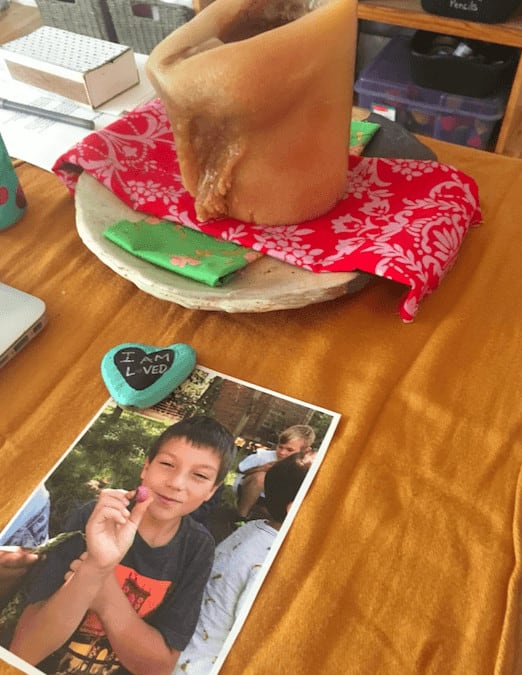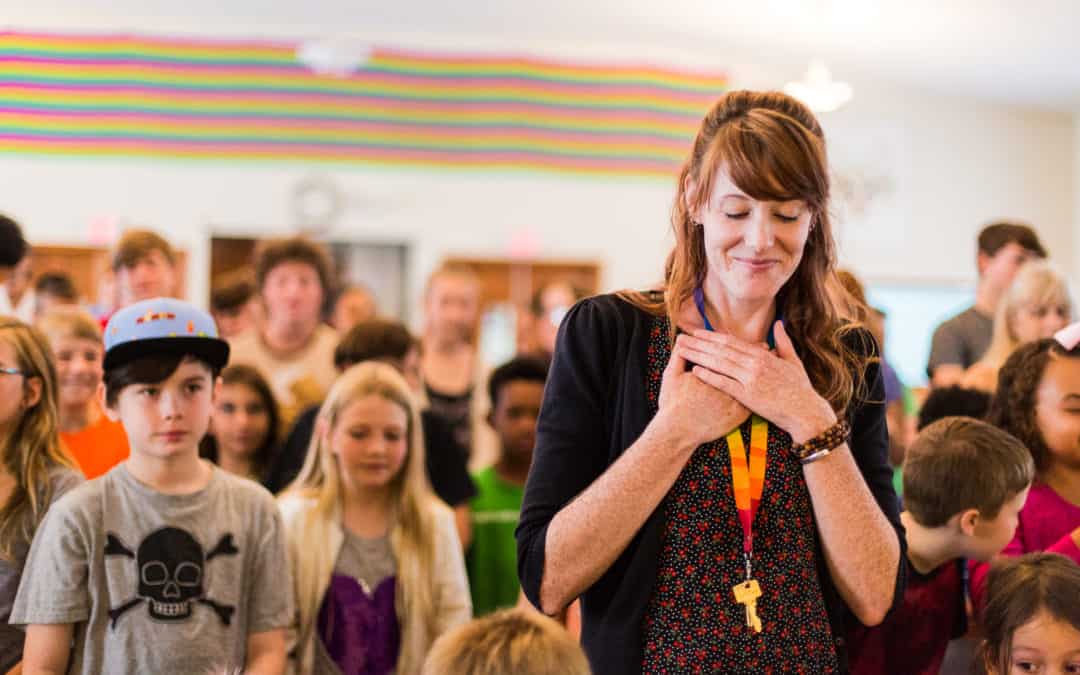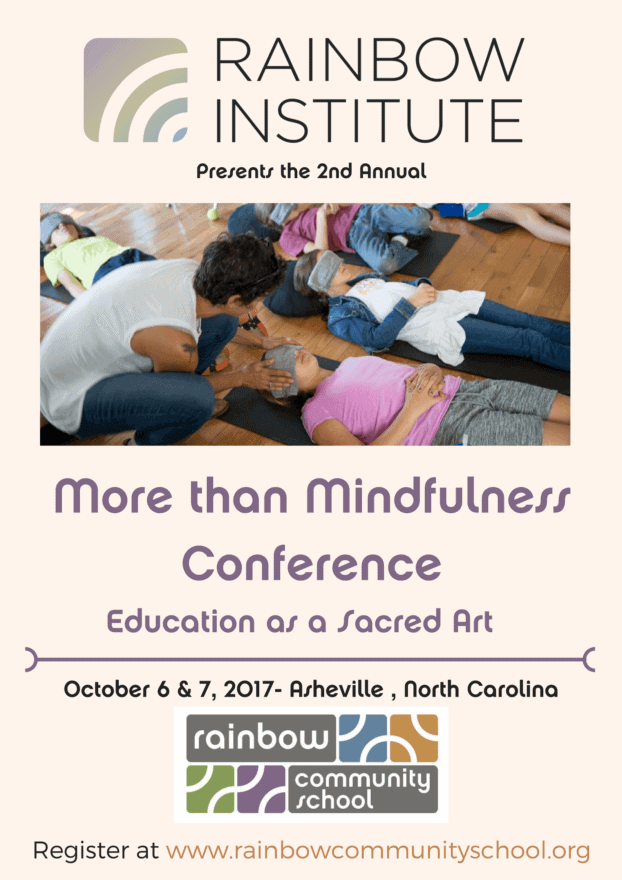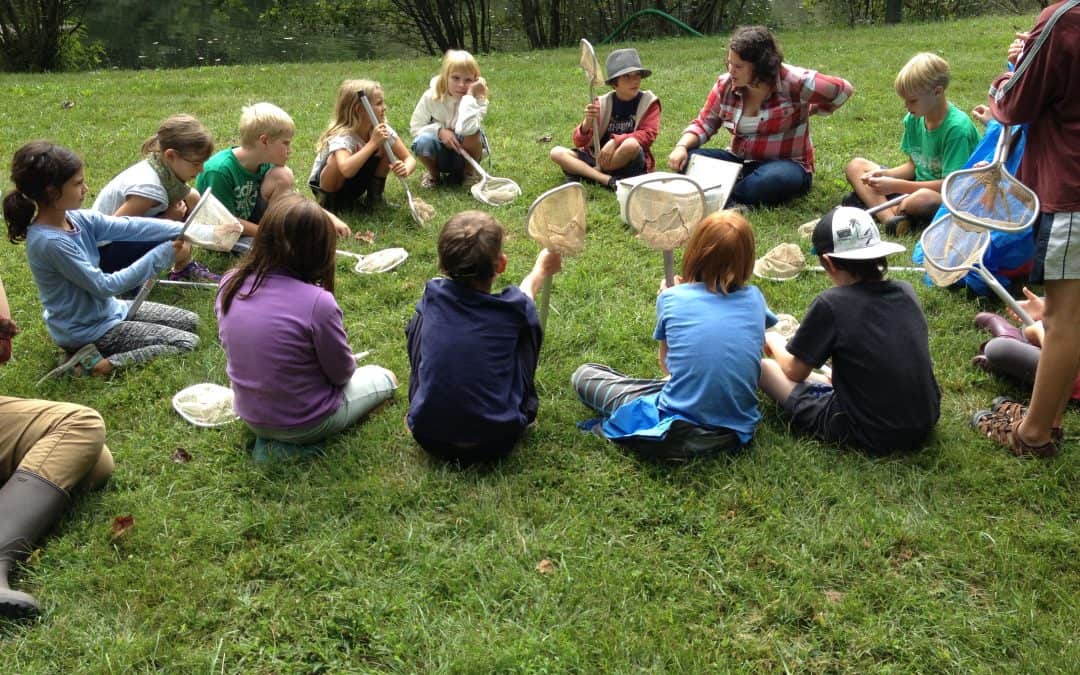
Strengthening your light in the season of darkness
The week back to school after a long winter break is often buzzing with excitement and anticipation. During these days, children will share stories of their time apart, celebrate coming back together and show enthusiasm for what is to come. Time is also set aside for deep reflection, individual and collaborative goal setting and for the renewal of commitments to oneself and to others.
This last week yielded particularly frigid temperatures and harsh weather conditions, embedded within the season of darkness. These winter circumstances provided a perfect context for a centering led by 4th-grade teachers, Susie and Molly.
As the centering began, Susie picked one of several snake skins that were decorating the classroom altar. She explained that the snake skin was a symbol of renewal and that by being able to let go of or shed that which no longer serves us, we make room for a renewal of those things that do.
She then invited all her students to collect a meditation mat and cushion, to remove their shoes, and to lie down and stretch out their bodies. She asked them to begin to settle in by allowing their bodies to become still, to notice their breath and to quiet their minds. She played some soothing music while she and Molly applied warm compresses to the eyes of those students who had requested them. She explained that the compresses served as a tool that helps you to relax, tune out the things around you and help you to send your focus inward.
Susie then led the students in a meditation that began with a body scan; a mindfulness technique that allows you to focus your attention on your physical being in an effort to achieve deep relaxation.
Susie proceeded with a guided meditation. She stated, “now that the work of your body is settled, lets gently enter the mind. Even in the state of easy rest, your thoughts have great power.”
“You have the power to build light inside of yourself each day. So as we settle into winter, a time of darkness and rest, take these next few breaths to speak kind thoughts to yourself. Allow yourself to imagine that with each thought, your body fills with light.”
“Now that you have built your fire, keep it burning. Remember that this time of renewal does not only come once a year, but every day, and with every moment. Continue to stoke your fire”
“You also have the power to share your light with others.”
“Imagine that your light streams out through your ears, use this to listen for opportunities to compliment a friend.”
“Imagine that your light streams out through your hands, use this to create beauty and offer a gentle touch to friends or family.”
“Imagine that your light streams out through your eyes, use this to observe others from a place of integrity and empathy so that you do not judge just based on what you see.”
“Imagine that your light streams out through your mouth, use this to speak with intention and compassion because words are so deeply powerful.”
“Imagine that your light streams out of the top of your head, use this to share your brilliance and uplifting thoughts with others.”
Susie closed centering by inviting an awareness back to the room, the present moment and one another.
I am sure many of you have already engaged in your own reflective practice for the new year. I am sure many of you have worked to let go of the things that don’t serve you. I am sure many of you are already rich with goals and intentions for a new year filled with joy and happiness.
In order to better achieve those goals or live those intentions, I invite you, during this time of darkness, to claim your personal power and to embrace the tools and techniques that help you to turn your light and share it with others.
“Happiness can be found even in the darkest of times if one only remembers to turn on the light.” ~ Dumbledore

Listening Conferences: A Deep Listening Activity
The words of American spiritual teacher and author Ram Dass encourage us to live FULLY, in the present moment, without judgement. How do you achieve this? What practices do you embrace?
“Be Here Now” for example, calls on mindfulness practice.
“The quieter you become, the more you can hear” invites stillness.
“The heart surrenders everything to the moment. The mind judges and holds back” summons your love.
As individuals on our own unique spiritual journeys, we are always looking for inspiration that may guide our inner work. Ram Dass’s wisdom offers insight and intention that may aid in cultivating a heightened self-awareness. We know that an elevated self-awareness has the capacity to lead to meaningful and enduring relationships.
RCS is founded on meaningful relationships.
The relationship between the teacher and the learner is the heart of education and a parent is a child’s first teacher. Rainbow honors that and strives to communicate with parents compassionately and empathetically, learn from the parent, see the child from through many lenses, support the child holistically and bridge home life and school life. One of the many ways these relationships are nurtured is through meaningful and intentional conferencing. Rainbow sets aside a conference time in early September called Listening Conference. During this conference the faculty calls upon self awareness by practicing the skills of deep listening.
Deep Listening is a way of hearing in which we are fully present in the moment without judgement or control. Deep listening asks us to let go of our inner dialogue, pre-formed opinions and assumptions, challenges us to abstain from crafting a response and simply listen in a mindful and respectful way to what is be shared. This is a time to be attentive not reactive, to listening actively not passively, to embrace compassion and empathy, AND to bring a great self-awareness to the act of listening.
To do this effectively requires that our mind takes a backseat to our heart.
Each conference embraces these powerful questions: Can we develop a practice of listening that allows another person to find their next step? Can we become the birthplace of understanding for someone else? Can we learn to carry in our hearts the destinies of others?
Each conference opens with a sacred ritual. Teachers may light a candle, read a reflective quote, hold space for silence, lead a guided mediation and/or offer a prompt with the purpose of inviting the child’s spirit to the conversation.
How can what we do at RCS inspire your own personal or professional work? What if we practiced deep and mindful listening in our everyday lives, what if we always invited spirit in to the conversation?

Turning Routine into Ritual
Fall is here and fall break has likely come and gone for many of us. This season often brings a lot of transition for our students. These transitions are embedded in the rhythms of the natural world, the energy around celebrations and holidays, and within the refection and personal goal setting that emerges from the start of each school year.
With this in mind, I invite you to stop for a moment and imagine the experience of a child as he transitions from home to school after just one night, a weekend, or a long holiday.
Maybe you imagined the hustle and bustle as he arrvied- the classroom filled with stories, sharing, reconnection and laughter. Or maybe you imagined the groggy, sleepy child, dragging his feet and resisting the weekday routine. Or even the child emerging from a car ride full of screen time. Maybe you witnessed a child arriving hungry without a proper dinner and/or breakfast. Or a child who is sleep deprived due to long working hours from the previous. Or even a child who is managing some sort of trauma in his life. Regardless, the classroom you imagined was likely flooded with 20+ learners holding varying levels of energy, focus, fuel, and general centeredness. As educators, we recognize the importance of holding space for all those varying energies but for also fostering a culture of centeredness so that all pathways to learning are open.
How do we actively support this transition from home to school each day?
How do we invite a level of awareness or mindfulness for our learners?
How do we foster a sacred intention for learning?
At Rainbow we achieve this through a morning ritual called centering. Ritual is simply defined as a ceremonial act. To that end, our centering practices are ceremonial in nature. During these practices, simple routines are turned into rituals through tone, intention and mindfulness.
First, the hustle and bustle of the morning is calmed and quieted with the ring of a chime or bell. It is amazing how a soft sound can silence a room and even more amazing how silence can invite sacredness into a space. This sound is a reminder to the students that they are about to engage in a sacred ceremony.
Secondly, pausing to take deep breaths together shifts each person’s individual energy into a collective synergy. Then, lighting a candle in silence invites something powerful and even magical into the classroom. This fire also serves as an anchor point for which learners can choose to cast their gaze when reflecting or meditating. Additionally, sending a greeting around the circle or turning to greet a neighbor not only allows each individual to be seen and to be witnessed, but it invites compassion, empathy and mutual respect. Speaking a verse, blessing or word into the circle also supports coherence and connectedness among all class mates. It serves as another reminder that we are on this learning journey together.
These rituals not only help to support the home to school transition, focus each learner, nourish class coherence and synergy, but they remind us that learning is scared.
Rainbow utilizes ritual in other transformative ways; meal blessings, honoring and memorializing people, animals & places, expressions of gratitude and appreciation, blessing ways and other birth and death transitions, rites of passage, communal celebrations all become ceremonial acts.
How can what we do at RCS inspire your own personal or professional work?
Can you replace a daily routine with a ritual by adding a mindful presence to it or by enhancing it with ceremony?
Try creating ritual for your classroom, organization and/or home?
Here is a brief list of simple rituals:
A gratitude exercise, a silent nature walk, quote reflection, a daily song/ verse or blessing, a visualization, read a daily story with a virtue/ moral, draw and/or color a mandala, borrow/adapt a ritual from a particular culture/religion, create nature art, give affirmations to friends and family members, practice mudras, yoga, qigong, or a martial art, and daily journaling.

Rainbow Community School: 40th Anniversary Announcement
Our Executive Director, Renee, has created a video inviting all students, staff, alumni and families of Rainbow Community School to join us in celebrating 40 years of holistic education.
Below is a summary of the video, with invitations to the 40th Anniversary Celebration and the More Than Mindfulness Conference.
Celebrating 40 Years of Love!
Rainbow is 40 years old. We invite you to celebrate with us!
Some great leaders and healers gathered together in 1977 to found Rainbow Mountain Children’s School. Now known as Rainbow Community School, it was founded on love.
The world becomes what you teach. — Zoe Weil
The school’s founders envisioned a curriculum that taught love and mindfulness, so that the world would become more of these things.
40 years later, we’re doing a two year celebration.
This is because school leaders began shaping their vision for the school in 1977 through parent meetings, gathering ideas, and research. The school opened its doors for the first time in 1978.
This year, in 2017, you’ll begin to see a lot more information about the history of the school, interviews with alumni, and more. In the fall of 2018, we would like to put together a celebration involving all members of our community, both past and present.
Rainbow alumni are invited to the first annual alumni gathering on Friday, Oct. 6th, 2017 from 7-10pm at Rainbow Community School.
Looking For Volunteers
To that end, we are looking for volunteers for a 40th Anniversary Committee.
If you’re interested, please contact Kate in the office at info@rainbowlearning.org.
You can also contact Renee directly at 258-9264 ext. 111 or you can email her at renee.owen@rainbowlearning.org.
The More Than Mindfulness Conference

We believe that getting the word out about love and mindfulness is so incredibly important. Because of that, we also want to invite you to the More Than Mindfulness Conference.
RCS has an adult education component where we train parents, teachers, and other adults in using holistic education practices, and mindfulness practices. It’s a great opportunity for folks to deeply understand what we are about here at Rainbow, and the larger purpose behind what we are doing.
Register for the MTM Conference Here
Thank you for celebrating 40 years of love with us. We know it’s a great education for your child and a great education for the world.

Nature as Divine Teacher
A culture that is permeated by a materialist philosophy sees the Earth as a commodity- a resource to bought, sold, quantified and controlled. In this view- humans are separate from nature instead of interdependent. Many of the educational methods at Rainbow aim to shift this paradigm by paying homage to the sacred bond between nature and humanity and connecting children to nature on heart and soul level.
Our model and methods have been inspired by educators such as David Sobel. Sobel an educational theorist and author, is most known for his theories on placed based education- in which the local community, culture, landscape, and environment not only become the classroom but also the teachers.
In Sobel’s educational philosophies the natural world plays a central as a teacher. In one of his most famous works, Beyond Ecophobia: Reclaiming the Heart in Nature Education, he explores the learning needs and characteristics of three primary child development stages and likewise, proposes three nature engagement methods. In early childhood, the focus should be on nurturing an empathetic connection towards nature. In middle childhood, nature exploration is emphasized and in early adolescence, stewardship and environmental action takes precedence.
He suggests that this progression not only supports a child’s “biological tendency” to bond with the Earth but fosters “environmentally aware, empowered students” He goes on to state, “if we want children to flourish, to become truly empowered, then let us allow them to love the Earth before we ask them to save it. Perhaps this is what Thoreau had in mind when he said, “the more slowly trees grow at first, the sounder they are at the core, and I think the same is true of human beings.”
Sobel’s work aims to connect children on that heart and SOUL level.
At RCS, Nature is not only a classroom for every student but also plays a central role as a teacher. The Natural World is highlighted in RCS’s mission, vision, guiding principles, and our Rainbow Seven Domains educational method. However, school’s out for summer…BUT we invite you to consider nature as a classroom and a teacher.
Summertime for many children means being outside. Summertime often yields many opportunities to deepen our nature connection- longer days, warmer temperatures, trips to new places, nature hikes, water play, gardening, summer camp, the list goes on. In what ways have you and your family engaged with nature? In what ways has it become a classroom or been your teacher? What have you learned in it and from it?
Now consider your own childhood, how did summertime offer opportunities for a nature connection? Through play, adventure, inquiry and expression? What about deep observation, a cultivation of awe and wonder, what about meaningful relationship and veneration? Most importantly, can you remember a spiritual moment that occurred while in the natural world? These moments in nature can have profound and lasting effects on a child. This connection if nurtured, has the capacity to become intimate, empathetic and sacred. Children can begin to see the natural world as a divine teacher. Therefore it becomes our role as parents, friends, family members, and mentors to hold space- to nurture- to foster that intimate, empathetic and sacred bond.
As you and your family make summer plans for time in nature, consider how you may invite “Nature as divine teacher” along. Embark on your adventures, but pack these considerations with you:
- How can you approach nature with a robust wonder and awe?
- How can you bring a heightened mindful presence to your activities?
- How can you make time for deep contemplation and reflection?
- How can you show gratitude?








